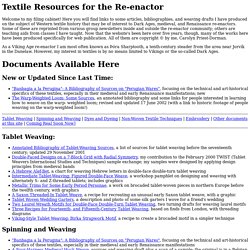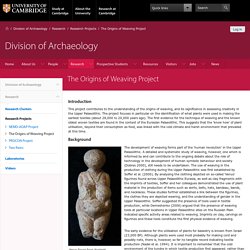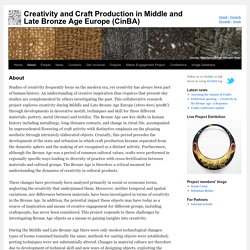

Programme – Colour in Cloth. DAY ONE: University of Glasgow 09.00-09.15 – Registration 09.15-09.30 – Welcome and Introductions 09.30.11.00 – PANEL 1: Pigments and Processes Jenny Balfour-Paul, University of Exeter, ‘Indigo – Universal Dye, Colour of the Universe’ Patricia Wallace, University of Canterbury, New Zealand, ‘Colour on Cloth – the Maori Way’ Avalon Fotheringham, V&A, ‘Magenta-dyed Textiles from India at the V&A’ 11.00-11.15 – Break 11.15.12.15 – PANEL 2: The Dark Ages?

Karina Grömer, Natural History Museum, Vienna and Margarita Gleba, University of Cambridge, ‘Tracing Coloured Checked Cloth in Prehistoric Europe’ Alexandra Makin, University of Manchester, ‘Colour and Embroidery in the Early Medieval Period’ 12.15-13.15 – Lunch 13.15-14.15 – PANEL 3: Colour and Design Fiona Jardine, Heriot Watt, ‘Colour as Design: Weave Me a Rainbow’ Fiona Anderson, Independent Curator and ECA, ‘Designing Tweeds: Colour, Gender and Landscape’ PANEL 4a: Seeing Red PANEL 4b: Colour and Fashion 16.00-16.15 – Break.
Taylor & Francis publications search. Textile Resources for the Re-enactor. Welcome to my filing cabinet!

Here you will find links to some articles, bibliographies, and weaving drafts I have produced on the subject of Western textile history that may be of interest to Dark Ages, medieval, and Renaissance re-enactors. Some of these are reprinted from various group newsletters inside and outside the re-enactor community; others are teaching aids from classes I have taught.
Now that the website's been here over five years, though, many of the works here have been produced specifically for web publication. All of them are copyright © by me, Carolyn Priest-Dorman. As a Viking Age re-enactor I am most often known as Þóra Sharptooth, a tenth-century steader from the area near Jorvík in the Danelaw. New or Updated Since Last Time: Tablet Weaving | Spinning and Weaving | Dyes and Dyeing | Non-Woven Textile Techniques | Embroidery | Other documents at this site | Coming Real Soon Now] Tablet Weaving: Spinning and Weaving Dyes and Dyeing Non-Woven Textile Techniques Embroidery. CTR – University of Copenhagen. Archaeological Textiles Newsletter. The Origins of Weaving Project — Division of Archaeology. Introduction This project contributes to the understanding of the origins of weaving, and its significance in assessing creativity in the Upper Palaeolithic.

The project focuses in particular on the identification of what plants were used in making the earliest textiles (about 28,000 to 20,000 years ago). The first evidence for the technique of weaving and the known oldest woven textiles are found in the context of the Eurasian Palaeolithic. This suggests that the 'know how' of plant utilisation, beyond their consumption as food, was linked with the cold climate and harsh environment that prevailed at this time. Background Venus figure from Kostenki (Hermitage cat. no. 2928/12, photo by Lila Janik) The development of weaving forms part of the 'human revolution' in the Upper Palaeolithic.
The early evidence for the utilisation of plants for basketry is known from Israel (23,000 BP). Batten fragment from Malt'a (Hermitage cat. Spinning in art history. Bronze Age. About. Studies of creativity frequently focus on the modern era, yet creativity has always been part of human history.

An understanding of creative inspiration thus requires that present-day studies are complemented by others investigating the past. This collaborative research project explores creativity during Middle and Late Bronze Age Europe (1800-800/500BC) through developments in decorative motifs, techniques and skill for three different materials: pottery, metal (bronze) and textiles. The Bronze Age saw key shifts in human history including metallurgy, long-distance contacts, and change in ritual life, accompanied by unprecedented flowering of craft activity with distinctive emphasis on the pleasing aesthetic through intricately elaborated objects. Crucially, this period precedes the development of the state and urbanism in which craft production became separated from the domestic sphere and the making of art recognised as a distinct activity.